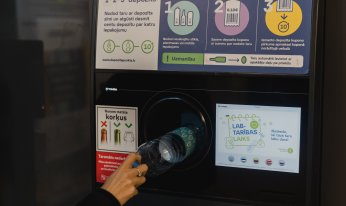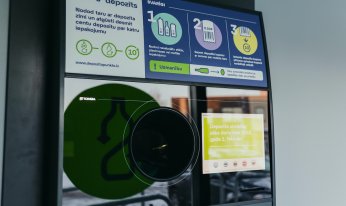Where to return deposit package?
Kā saņemt depozīta maksu?
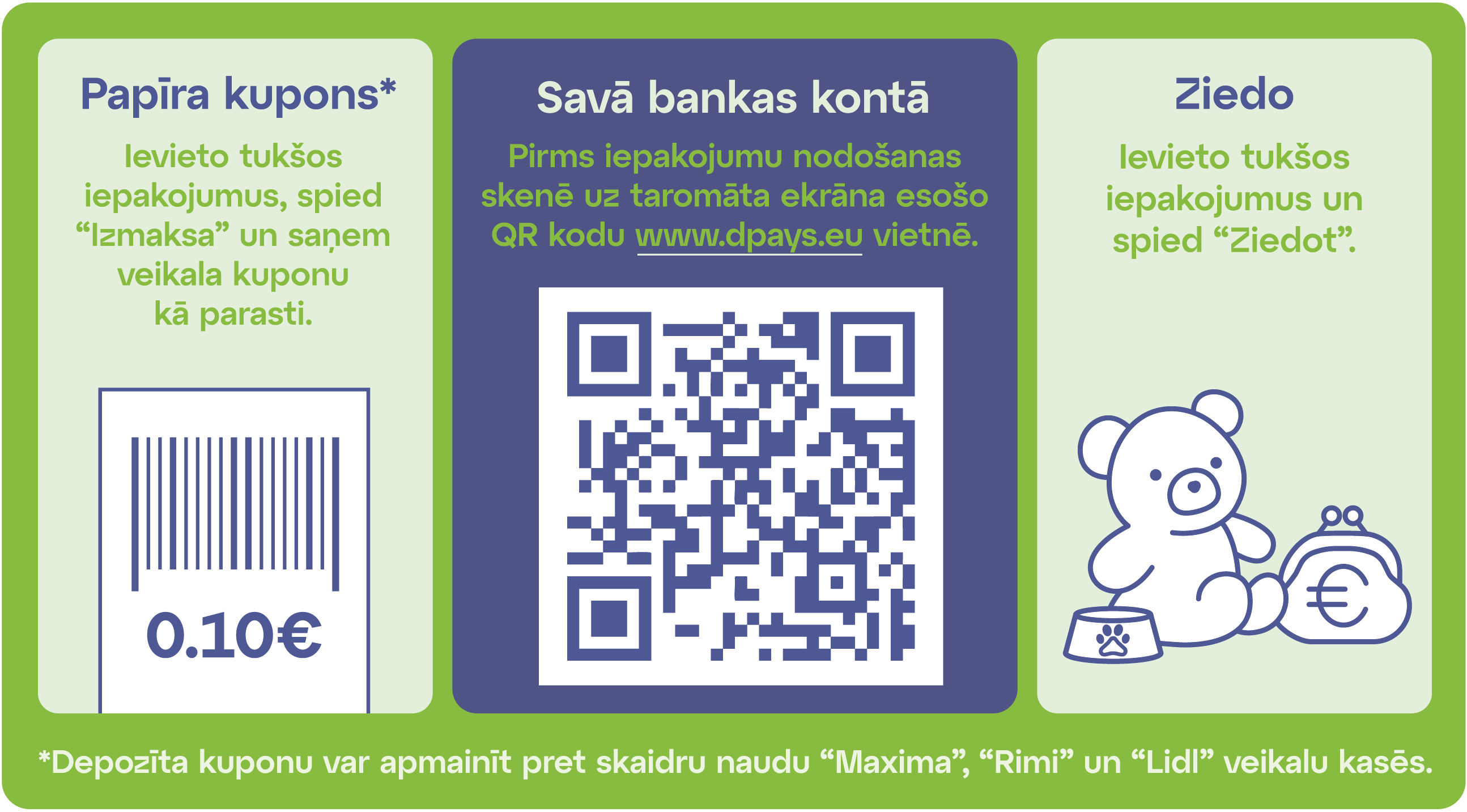
Kā izmantot dPays un saņemt depozīta maksu bankas kontā?
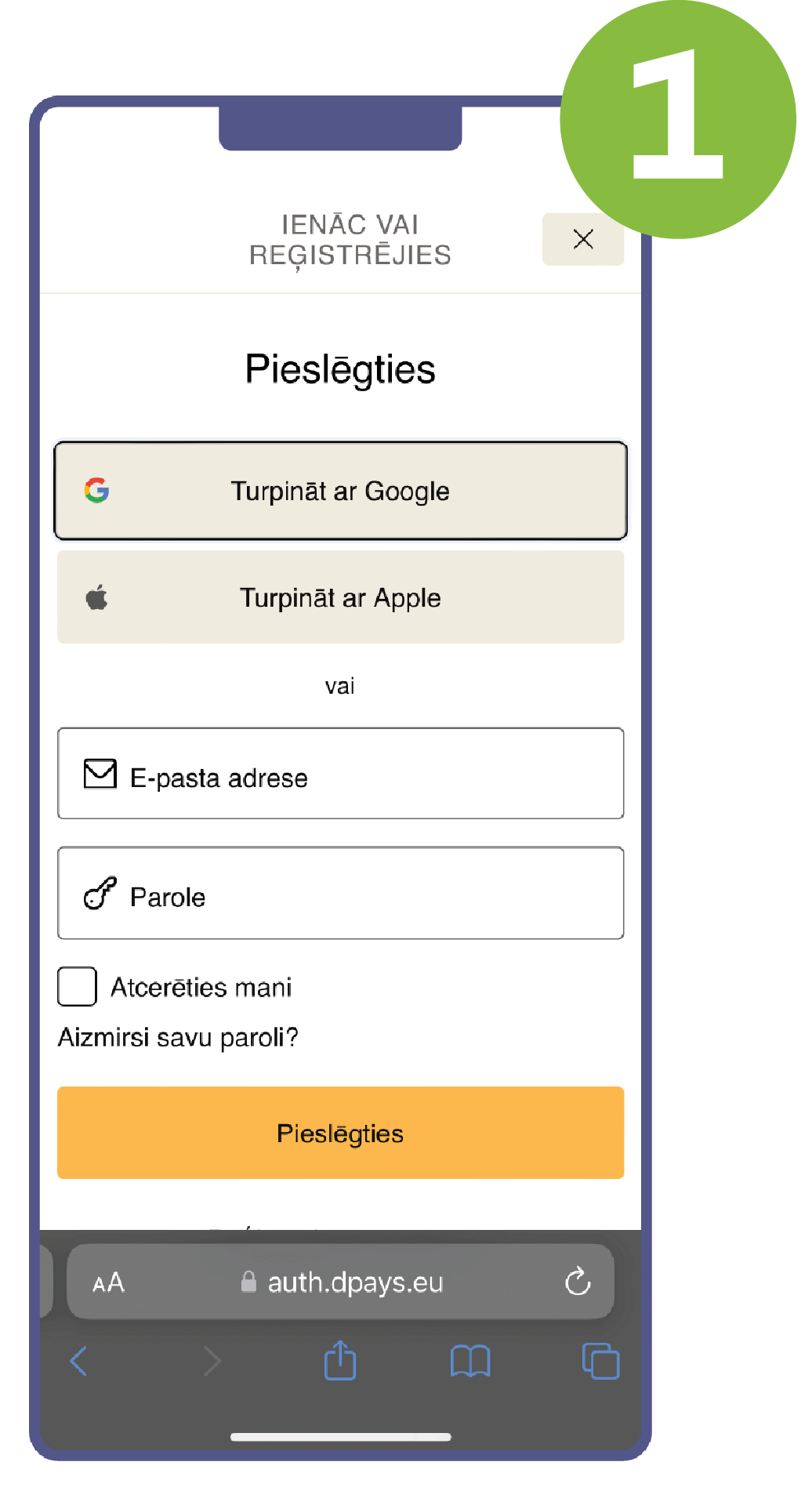
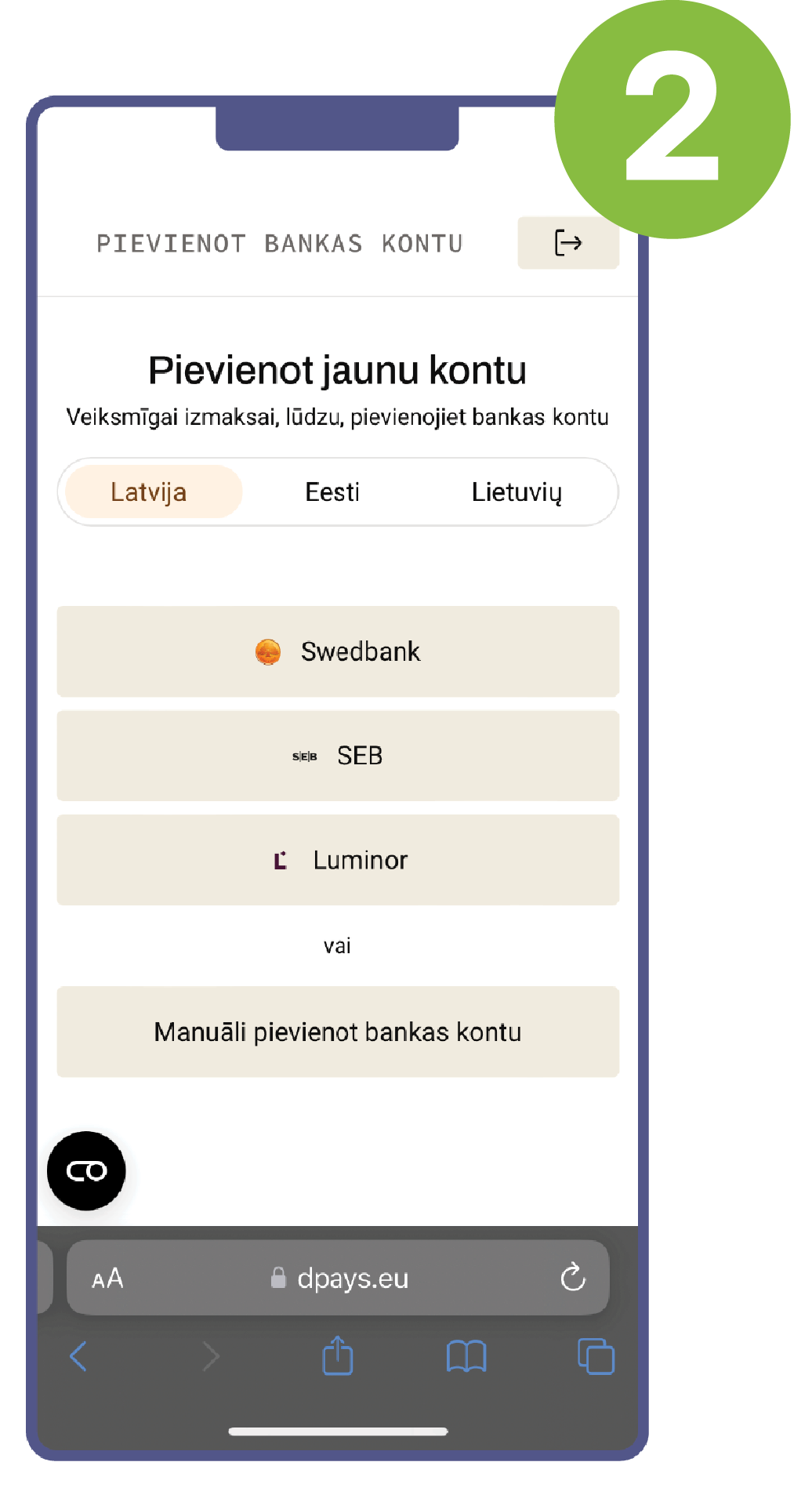
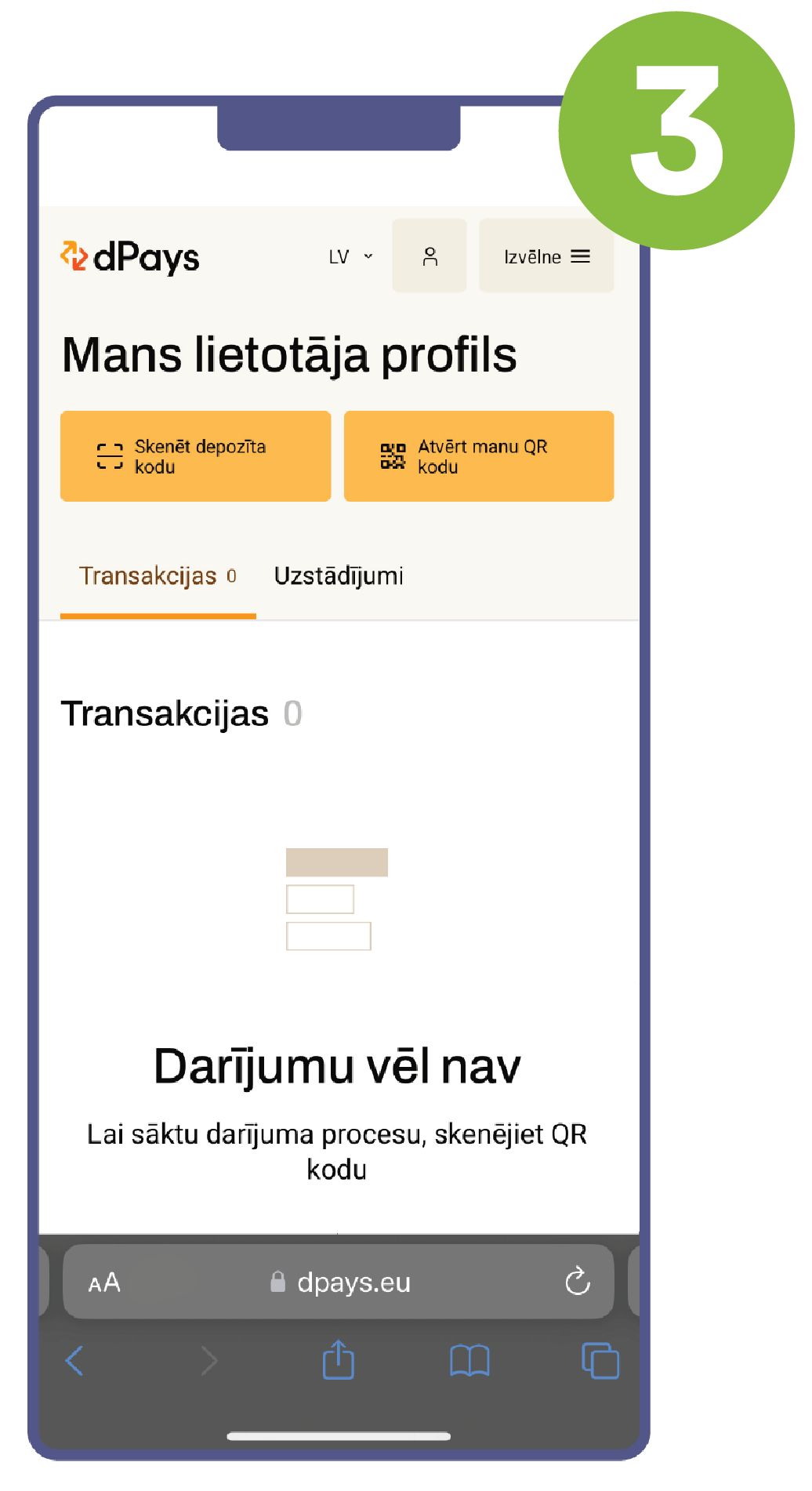
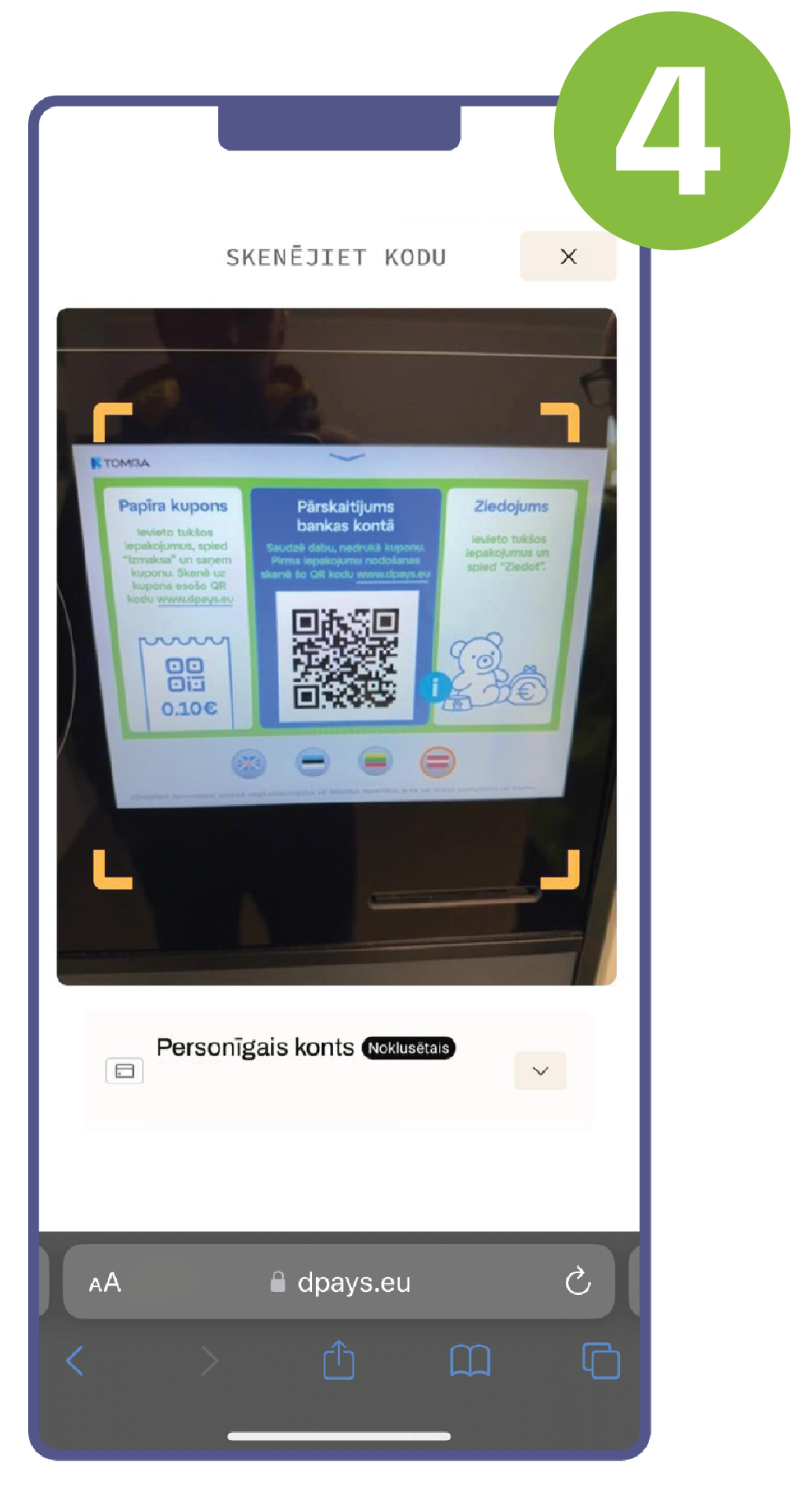
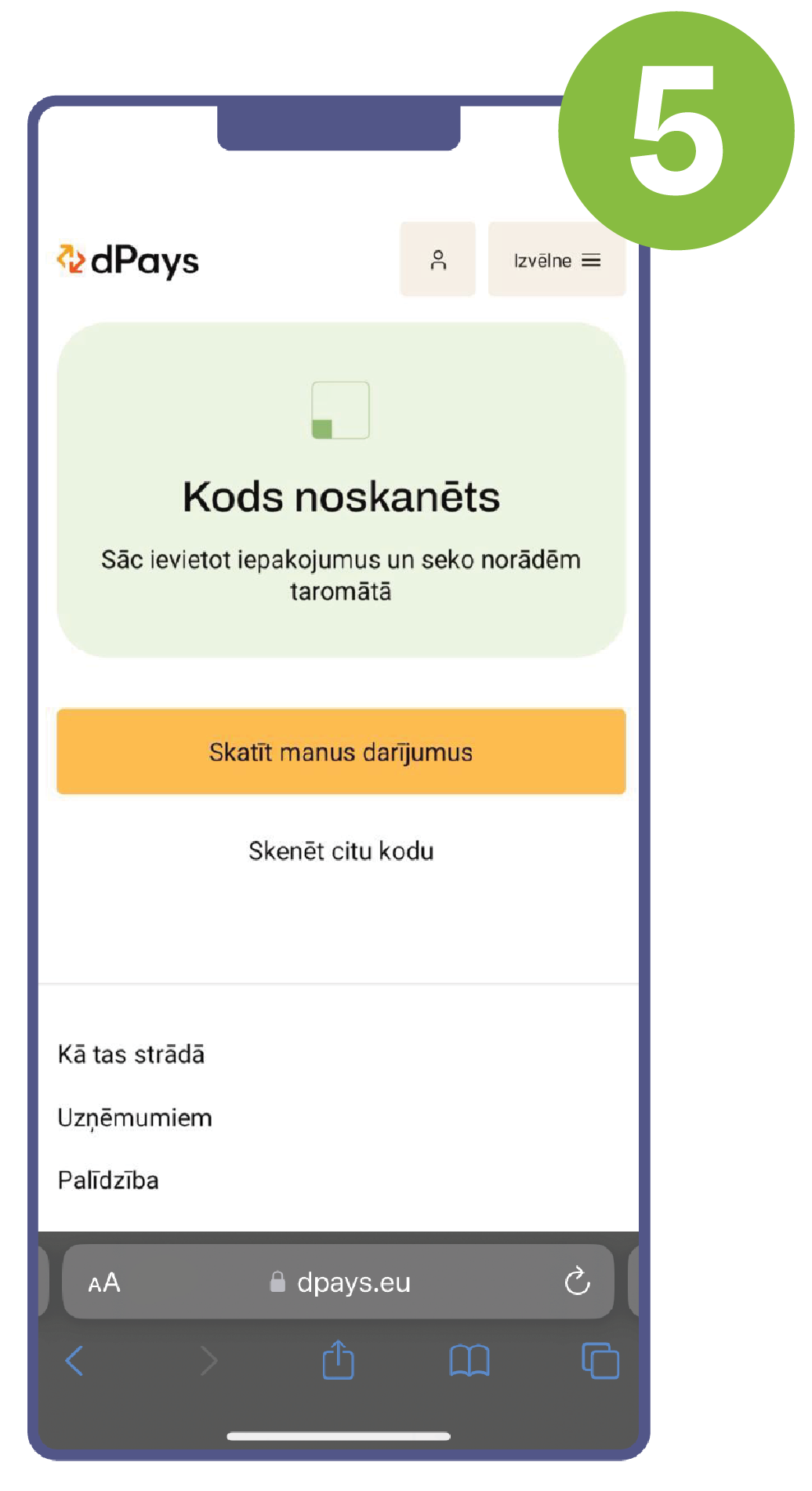
What kinds of packaging can I return at deposit stations?
Did you know?
Recycling discarded aluminium cans consumes 92% less energy than making new cans out of raw materials, while one recycled aluminium can saves enough energy to power a television set for three hours!
Did you know?
In recent decades, thanks to the ‘lightweight’ properties of PET, the average weight of a PET bottle has fallen by 48%, making this a more climate and eco-friendly material. Currently, most disposable plastic water bottles weigh just under 10 grams, while still being sufficiently strong to hold up to 50 times the quantity of water.
Plastic pollution is one of the biggest threats to the environment, and has an adverse effect on all living organisms: sorting and recycling this material is critical in protecting nature, preventing pollution, reducing CO2 emissions, and saving energy and natural resources.
Did you know?
The energy saved by recycling a single glass bottle is enough to keep a 100 W lightbulb on for 4 hours! Recycling glass bottles also produces 20% less air pollution, and 50% less water pollution than making new bottles out of raw materials.
Refillable glass bottles serve as valuable materials for reuse: washed and refilled, these bottles can be brought back to the market and survive as many as 10–15 of such cycles, thus saving a large quantity of energy and resources that would have otherwise been spent on making new bottles.
CANS
Europeans consume as much as 50 billion aluminium cans every year, making them one of the most common types of packaging for drinks in the world! Aluminium cans are one of the most valuable types of packaging, and they are very sustainable, because an average can consists of about 70% recycled metal. Thanks to the strength and durability of their material, cans are capable of withstanding extreme temperatures and pressures, while protecting the drink from direct sunlight and other factors.
Did you know?
Recycling discarded aluminium cans consumes 92% less energy than making new cans out of raw materials, while one recycled aluminium can saves enough energy to power a television set for three hours!
PLASTIC (PET) BOTTLES
PET bottles are one of the most common types of packaging for non-alcoholic drinks and water, as some 62% of all PET made globally is used to make bottles. Thanks to its composition, it is also one of the most sustainable materials, too: PET is fully recyclable, and can be reused to make new bottles, clothes, carpets and other products.
Did you know?
In recent decades, thanks to the ‘lightweight’ properties of PET, the average weight of a PET bottle has fallen by 48%, making this a more climate and eco-friendly material. Currently, most disposable plastic water bottles weigh just under 10 grams, while still being sufficiently strong to hold up to 50 times the quantity of water.
Plastic pollution is one of the biggest threats to the environment, and has an adverse effect on all living organisms: sorting and recycling this material is critical in protecting nature, preventing pollution, reducing CO2 emissions, and saving energy and natural resources.
GLASS BOTTLES
Glass is a 100%-recyclable material made out of easily available and easy-to-extract materials, such as sand, soda ash, limestone and gravel. Thanks to its smooth, uniform and hermetic structure, glass packaging does not affect the flavour of the beverage. When recycled, glass does not lose its properties, and can be reused to make new bottles, insulation wool, or glass tiles.
Did you know?
The energy saved by recycling a single glass bottle is enough to keep a 100 W lightbulb on for 4 hours! Recycling glass bottles also produces 20% less air pollution, and 50% less water pollution than making new bottles out of raw materials.
Refillable glass bottles serve as valuable materials for reuse: washed and refilled, these bottles can be brought back to the market and survive as many as 10–15 of such cycles, thus saving a large quantity of energy and resources that would have otherwise been spent on making new bottles.
Remember!
In the deposit system, you can hand over glass, plastic (PET) and metal (cans) packages filled with non-alcoholic (except dairy products), all types of beer and other alcoholic beverages up to 15% (except wine, sparkling wine and fruit wine). You can also transfer all types of alcoholic beverages filled in PET bottles and cans, as well as bottles of beverage syrups, to the deposit system. All packages transferred to the deposit system are marked with the Latvian deposit mark!

 Cans
Cans
 Glass bottles
Glass bottles
 Plastic PET bottles
Plastic PET bottles
 Cans
Cans
 Glass bottles
Glass bottles
 Plastic PET bottles
Plastic PET bottles

 Cans
Cans
 Glass bottles
Glass bottles
 Plastic PET bottles
Plastic PET bottles

 Cans
Cans

 Plastic PET bottles
Plastic PET bottles
* DIO has the right not to register packaging of non-standard shape or volume in the register of deposit packaging.
Is the package included in the deposit system?
Donate your deposit
HOW TO DONATE?
- After placing the packaging in the reverse vending machines, select the option “Donate”
- Choose one of the four proposed directions to which you want to donate
- Confirm your choice by clicking the “Donate!” button

ATTENTION!
- If you want to cancel making the donation and receive a deposit coupon, press the “Cancel and pay” button. After pressing the “Donate!” button, it is no longer possible to cancel the donation.
- If you want to donate to several charities, or if you want to donate only a part of the deposit payment, the packaging in the reverse vending machines must be handed over in several goes.
HOW TO DONATE?
- After placing the packaging in the reverse vending machines, select the option “Donate”
- Choose one of the four proposed directions to which you want to donate
- Confirm your choice by clicking the “Donate!” button

ATTENTION!
- If you want to cancel making the donation and receive a deposit coupon, press the “Cancel and pay” button. After pressing the “Donate!” button, it is no longer possible to cancel the donation.
- If you want to donate to several charities, or if you want to donate only a part of the deposit payment, the packaging in the reverse vending machines must be handed over in several goes.
HOW TO DONATE?
- After placing the packaging in the reverse vending machines, select the option “Donate”
- Choose one of the four proposed directions to which you want to donate
- Confirm your choice by clicking the “Donate!” button

ATTENTION!
- If you want to cancel making the donation and receive a deposit coupon, press the “Cancel and pay” button. After pressing the “Donate!” button, it is no longer possible to cancel the donation.
- If you want to donate to several charities, or if you want to donate only a part of the deposit payment, the packaging in the reverse vending machines must be handed over in several goes.
HOW TO DONATE?
- After placing the packaging in the reverse vending machines, select the option “Donate”
- Choose one of the four proposed directions to which you want to donate
- Confirm your choice by clicking the “Donate!” button

ATTENTION!
- If you want to cancel making the donation and receive a deposit coupon, press the “Cancel and pay” button. After pressing the “Donate!” button, it is no longer possible to cancel the donation.
- If you want to donate to several charities, or if you want to donate only a part of the deposit payment, the packaging in the reverse vending machines must be handed over in several goes.
AID FOR UKRAINE
The Russian army has invaded Ukraine and violated the borders of an independent state. Everyone can help the people of Ukraine. Donations will turn into real help – drones, generators, food and medicine for Ukrainian soldiers on the frontline and Ukrainian refugee families.
HOW TO DONATE?
- After placing the packaging in the reverse vending machines, select the option “Donate”
- Choose one of the four proposed directions to which you want to donate
- Confirm your choice by clicking the “Donate!” button

ATTENTION!
- If you want to cancel making the donation and receive a deposit coupon, press the “Cancel and pay” button. After pressing the “Donate!” button, it is no longer possible to cancel the donation.
- If you want to donate to several charities, or if you want to donate only a part of the deposit payment, the packaging in the reverse vending machines must be handed over in several goes.
SUPPORT FOR SHELTER ANIMALS
In shelters, animals spend their days waiting for their new owners. Abandoned or stray pets are treated, fed and cherished there. Usually they can stay in shelters for 14 days, but dogs and cats rarely manage to find a home so quickly, so a longer stay in the shelter is ensured thanks to donations from fellow citizens. The donated funds will be transferred to animal shelters across Latvia.
HOW TO DONATE?
- After placing the packaging in the reverse vending machines, select the option “Donate”
- Choose one of the four proposed directions to which you want to donate
- Confirm your choice by clicking the “Donate!” button

ATTENTION!
- If you want to cancel making the donation and receive a deposit coupon, press the “Cancel and pay” button. After pressing the “Donate!” button, it is no longer possible to cancel the donation.
- If you want to donate to several charities, or if you want to donate only a part of the deposit payment, the packaging in the reverse vending machines must be handed over in several goes.
AID FOR SENIORS IN NEED
The often modest pensions of Latvia's elderly frequently put them in an unenviable situation when they have to look for help – especially in such a financially difficult period as this winter. Help is needed for purchasing medicine, food and firewood, as well as for solving health problems, for example, paying for dental prostheses. Read more about the project here.
HOW TO DONATE?
- After placing the packaging in the reverse vending machines, select the option “Donate”
- Choose one of the four proposed directions to which you want to donate
- Confirm your choice by clicking the “Donate!” button

ATTENTION!
- If you want to cancel making the donation and receive a deposit coupon, press the “Cancel and pay” button. After pressing the “Donate!” button, it is no longer possible to cancel the donation.
- If you want to donate to several charities, or if you want to donate only a part of the deposit payment, the packaging in the reverse vending machines must be handed over in several goes.
SUPPORT FOR SERIOUSLY ILL CHILDREN
Illness does not discriminate and does not spare. There are many seriously ill children in Latvia whose hearts are filled with hope that one day they too will be like their peers – able to run, play and live a fulfilling life. Families of these children need not only enormous physical and emotional strength but also money – for treatment, medicines, operations, rehabilitation and various aids.
HOW TO DONATE?
- After placing the packaging in the reverse vending machines, select the option “Donate”
- Choose one of the four proposed directions to which you want to donate
- Confirm your choice by clicking the “Donate!” button

ATTENTION!
- If you want to cancel making the donation and receive a deposit coupon, press the “Cancel and pay” button. After pressing the “Donate!” button, it is no longer possible to cancel the donation.
- If you want to donate to several charities, or if you want to donate only a part of the deposit payment, the packaging in the reverse vending machines must be handed over in several goes.
In all deposit points it will be possible to hand in valid deposit packaging, regardless of where it was purchased. A valid deposit packaging is empty, not flattened or broken, it has a label with a clearly legible deposit mark

To hand in the empty deposit packaging in the automatic acceptance point, place them in the vending machine one by one with the lower part facing forward. When you have handed in all the deposit packaging into the vending machine, click on the button on the screen to complete the operation and receive the deposit coupon for the delivered packaging units. Use the deposit coupon to pay for the purchase in the store indicated in the coupon. *The coupon can be used as a means of payment for the purchase of any goods available in the store.
*Each point of sale may offer additional options for using the coupon, about which it will inform its customers separately:
- Possibility to use the coupon to pay for the purchase within the entire chain of stores;
- Possibility to exchange the coupon for cash.
 .
must be put in a place visible to customers. Contact the shop assistant to return empty deposit packaging. The shop assistant will check that the delivered packaging is not significantly damaged and that there is a deposit mark and a legible barcode on the packaging label. If the packaging meets these requirements, the seller will provide cash for the delivered packaging units or present it as a discount for the purchase.
.
must be put in a place visible to customers. Contact the shop assistant to return empty deposit packaging. The shop assistant will check that the delivered packaging is not significantly damaged and that there is a deposit mark and a legible barcode on the packaging label. If the packaging meets these requirements, the seller will provide cash for the delivered packaging units or present it as a discount for the purchase.
Frequently asked questions
Didn’ t find your question?
Frequently asked questions
Empty deposit packaging can be returned at more than 1400 deposit stations in Latvia. More than 1000 of the deposit stations are automated and packaging can be returned by using reverse vending machines (RVM’s). The rest of the deposit stations operate manually and empty packaging is accepted by the seller of the store. People are able to return empty deposit packaging at grocery stores and other shops in their neighbourhoods, and in other locations where they can buy drinks in deposit packaging, such as petrol stations.
See the deposit station map on the deposit system website, ‘Where do I deposit’ section.
The packaging not accepted by the deposit system can still be discarded in the nearby sorting waste containers. The deposit system is a way to expand and develop the waste management industry in Latvia, and to improve the results of processing the most common packaging that is usually simply discarded.
If you bring beverage packaging to a deposit station that is not accepted in the deposit system, or if, for example, the label on the packaging or the packaging itself is significantly damaged, you will be able to dispose of the packaging in the waste sorting bins available near the deposit stations.
Insert the deposit packaging one by one into the RVM, bottom first. Once all the deposit packaging has been returned to the machine, press the button on the screen to finish the operation, and get a deposit coupon for the packaging units returned. Use the deposit coupon to pay for purchases at the shop specified in the coupon.
RVMs accept bottles with caps and without, though we recommend depositing bottles with caps, because this will ensure that the cap is recycled, too, meaning a cleaner environment. Also, if the bottle cap is still on, it is easier to preserve the shape of the bottle.
The deposit packaging you hand over must be empty, not crushed, and not have any significant damage; however, RVMs do also accept slightly deformed or crushed packaging. The most important thing when returning deposit packaging is to make sure that the label on the packaging has the deposit system sign, and the barcode is legible.
If the RVM is not working, please tell this to the shop’s staff, who will then arrange the inspection and necessary repairs of the RVM. If the operation of the RVM cannot be restored sufficiently quickly, please go to the nearest deposit station.
If there is no RVM, but you know that the shop participates in the deposit system, go to the cash register and check if you can return the packaging manually to the register operator.
According to the amendments made to the Cabinet Regulation 519 ‘Regulations regarding the operation of the deposit system’, the seller of the deposit packaging is responsible for accepting the deposit packaging from the end user throughout the working hours of the store. However, if the store's working hours are longer than the sales hours of alcoholic beverages, then before 8:00 a.m. and after 10:00 p.m., the seller can decide whether to organize the acceptance of deposit packaging or not.
If the packaging has clearly visible Latvian deposit sign and barcode, is not damaged or flattened and inserted into the reverse vending machine correctly, but is not being accepted, please send us a photo of the packaging with clearly visible deposit sign and barcode, as well as the reverse vending machine location and date to jautajumi@dio.lv or via Whatsapp +371 20224214
No, the packaging purchased prior to the deposit system being put in place is not accepted at deposit stations. You are also not able to deposit any packaging bought during the transition period (before 1 August 2022) that does not have the deposit label. It is possible to dispose of the packaging without the deposit sign in the nearby sorting bins.
As stated in Annex 1 to Cabinet Regulation 519 ‘Regulations regarding the operation of the deposit system’, the deposit system applies to the following types of beverage containers:
- glass bottles with volumes of 0.1 and up to 3 l, not including;
- plastic (PET materials) bottles with a volume of 0.1 and up to 3 l, not inclusive;
- cans with a volume from 0.1 to 3 l, not inclusive.
All of these types of disposable and reusable packaging may contain the following drinks:
- carbonated and still non-alcoholic drinks, (such as mineral water, drinking water, soft drinks, energy drinks, coffee drinks, iced tea, juices, nectars) and syrups;
- beer (also non-alcoholic);
- cider;
- alcoholic beverages with an alcohol content of 0.5 % to 15 % (for example, cocktails or mixed drinks, including flavored wine drinks and coctails), excluding wine, sparkling wine, and fruit wine;
- all kinds of alcoholic beverages filled in plastic bottles or cans.
The types of packaging that may be returned to the deposit system are specified in Cabinet Regulation 519 ‘Regulations regarding the operation of the deposit system’. The deposit systems in place in our neighbouring countries, and all over the world, are most commonly intended for glass, plastic and metal packaging that account for the biggest share of beverage packaging, thus being the types of packaging most commonly found discarded in the environment, on the streets, and in public and entertainment venues.
Each country has its own independent deposit system and deposit sign. Each country's deposit system also has its own financial basis, for example, within the Latvian deposit system, beverage producers pay a deposit system membership fee for each deposit package placed on the market. Based on this, deposit packaging purchased in other countries cannot be returned to the Latvian deposit system, and only packaging marked with the Latvia deposit sign can be returned.
For now, the Cabinet Regulation does not include wine and liquor bottles in the deposit system. The deposit system accepts the packaging used for soft drinks, as well as beer and other drinks with an alcohol content of up to 15 %, as well as all types of alcoholic beverages, for example, vodka, brandy and wine, that is filled in PET bottles and cans. For more information about the drinks whose packaging is included in the system, see the website of the deposit system, section ‘What do I deposit?’.
The deposit fee is set in Cabinet Regulation 519 ‘Regulations regarding the operation of the deposit system’, and it is a deposit of 10 cents per unit of packaging, regardless of its type. The container is accepted for deposit if it has a legible deposit sign and barcode, and the packaging itself is empty and not significantly damaged. The deposit fee is not charged for any packaging bought prior to the launch of the deposit system on 1 February 2022, and for any packaging without the deposit sign bought during the transition period, which will end on 1 August 2022.
You can get the deposit fee back if you return the packaging to an RVM or manual deposit station. The packaging must have a legible deposit sign and barcode, and the packaging itself must be empty and not have significant damage.
If the packaging is returned via RVM, the deposit fee will be returned in the form of a coupon. The received coupon can be used as a means of payment for the purchase of any goods available in the store. It is important that the deposit coupon can be used only at the point of sale specified in the coupon.
At the manual deposit station, the store seller can return the deposit fee in cash or apply it as a discount for the purchase.
Since the September 23, 2022 amendments to the Cabinet Regulation No. 519 ‘Regulations regarding the operation of the deposit system’ Article 36 stipulates that the coupon can be used as a means of payment no less than one year after the date of issue.
There are currently three large-scale RVMs in Latvia. They are located in kiosks near the Maxima XXX store (Andreja Saharova street 20A, Riga), near the shopping centre Spice (Lielirbes street 29, Riga) and near the shopping centre Vivo (Katoļu iela 18, Jelgava).
The RVM will accept plastic (PET) and metal packaging. Important: glass packaging cannot be deposited in this RVM. Glass bottles can be deposited in the nearby RVM that is located in the same kiosk.
Up to 100 items can be dropped off at a time. In case a larger number of packaging needs to be deposited, please do so in several runs.
Before depositing items, please make sure that they have been emptied, are undamaged and have a legible deposit sign and barcode. To deposit items, drop them in the RVM and close the lid. The RVM will count all returned items and issue a deposit coupon. Instructions for use are displayed on the RVM.
This particular RVM model is not technically designed to accept glass packaging. Glass bottles can be deposited in the nearby RVM that is located in the same kiosk.
If a glass bottle is placed in the RVM, it will not be accepted and will fall into the compartment below the screen. Similarly, any packaging that for any reason (e.g., not emptied, damaged, etc.) will not be accepted by the RVM will go into the specific compartment. In such a situation, the user must check whether the packaging is empty, undamaged, has a clearly legible deposit sign and barcode, and then re-insert it into the RVM or deposit it in a nearby RVM.
The processing time depends on the number, type and size of the items deposited. On average, the RVM processes 60–80 items per minute.
Yes, the RVM offers the option to donate the deposit fee for the returned packaging. It should be noted that the specifics of the RVM allow for only one donation option, and in this RVM model people will be able to donate to animals in shelters.
It is possible to donate at all automated deposit return points that are equipped with reverse vending machines (RVM). An instruction to follow is displayed on the screen of the RVM to follow in order to donate your deposit fee. First, put all the empty deposit packaging, the deposit fee of which you want to direct to charity, in the RVM. Press the “Donate” button and choose one of the four proposed donation directions. When the direction of donation is selected, confirm the choice by pressing the “Donate!” button.
You can cancel the diverted deposit fee to charity in two stages of donating – at the moment when it is necessary to choose one of the four donation directions, as well as in the next step, when you need to confirm the choice made. In this stage of donating, a button “Cancel and pay” will appear on the screen – by clicking on it, you can stop the donation and receive a deposit coupon to be redeemed for products in the store.
Yes, any user can donate their deposit fee to multiple charities, but it is not possible to do this in one donation. To donate to more than one charity initiative, packaging must be handed over in several goes, choosing a different direction of donation each time.
Yes, each user can choose the amount of deposit fee to be donated to charity, but it is not possible to do this in one packaging depositing attempt. If the user wants to donate only part of the deposit fee, the packaging must be handed over in several attempts – donating one part, and receiving a coupon for the other part to be used to pay for products in the store.
After confirming the donation, the user can choose whether to print a coupon for the donation made. If the coupon is printed, it shows a symbolic thank you note for the donation made. It is important that the coupon for the donation cannot be used or otherwise redeemed for products at the point of sale indicated on the coupon.
The donation project is implemented in partnership with Ziedot.lv, the largest and most experienced charity organisation in Latvia. All the donated deposit payment goes to Ziedot.lv, which is responsible for the administrative function of the project and directs the funds to the appropriate charitable direction. As part of the donation project, it is also planned to communicate about the funds allocated to charity, informing about it through press releases and social networks.

